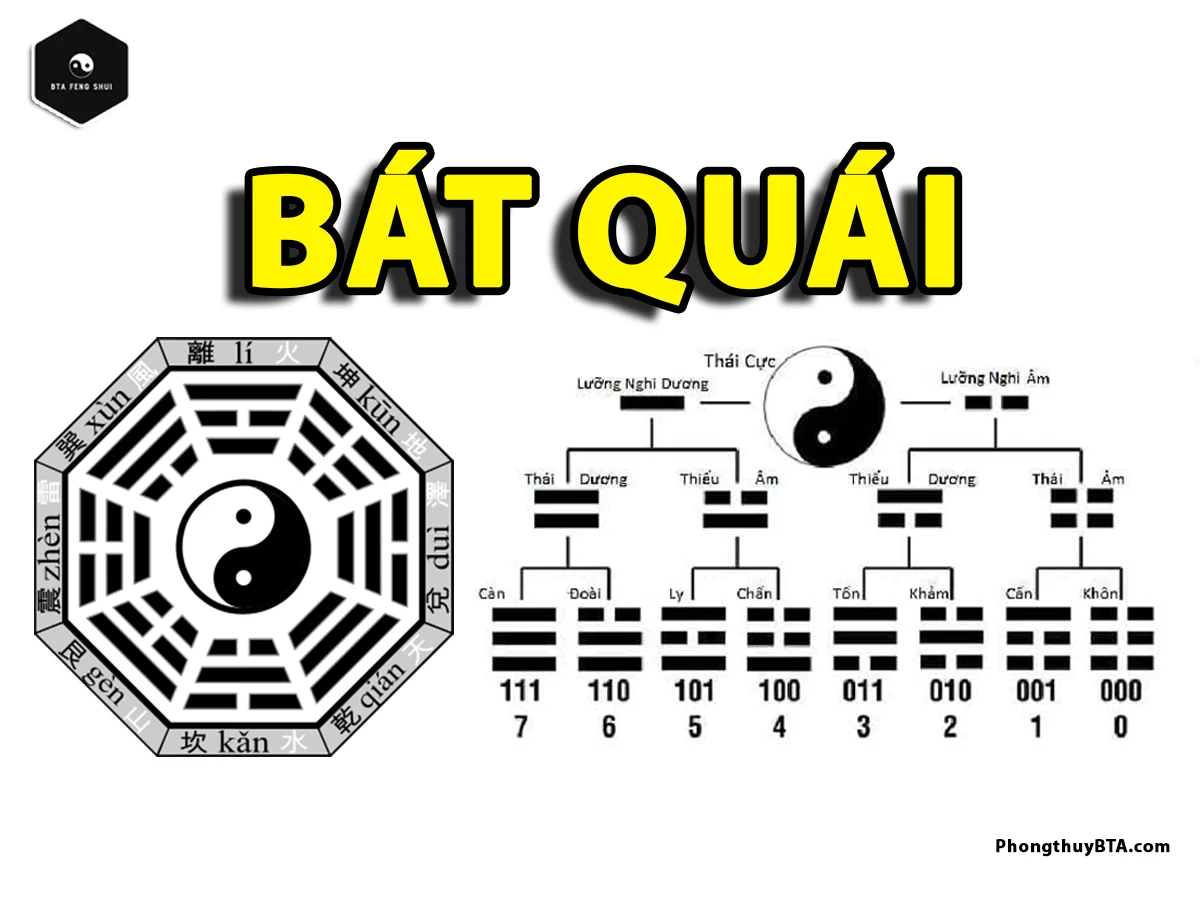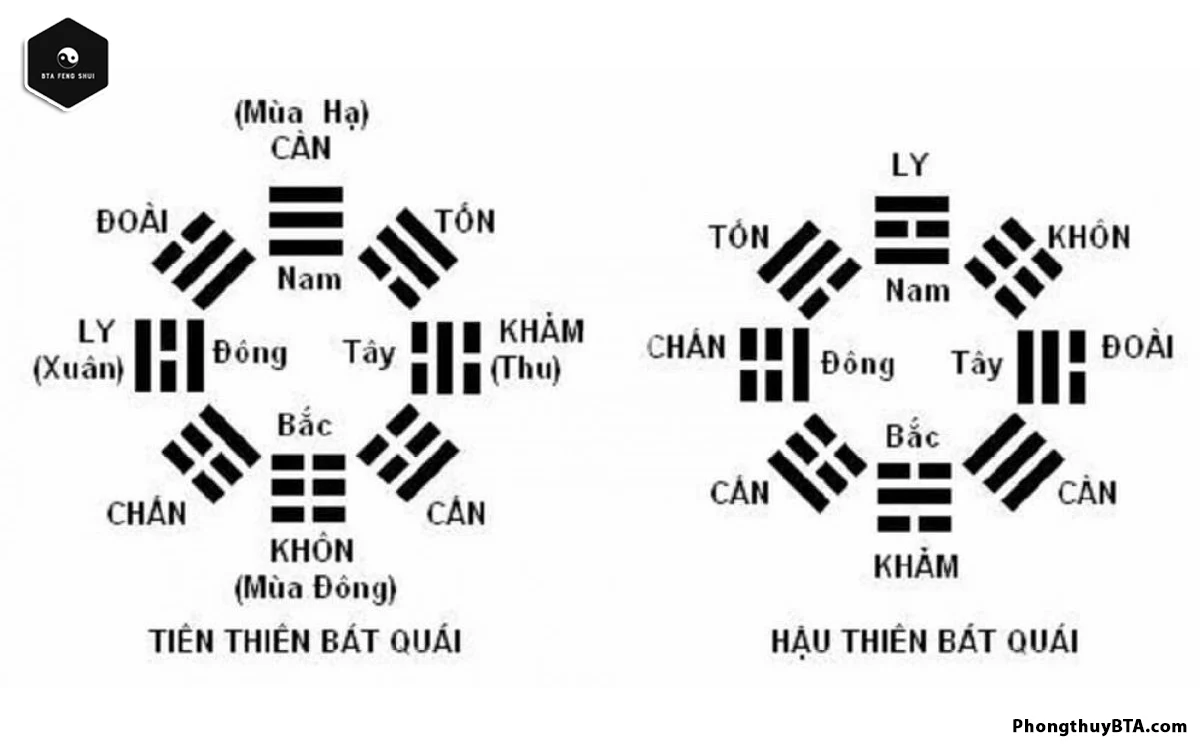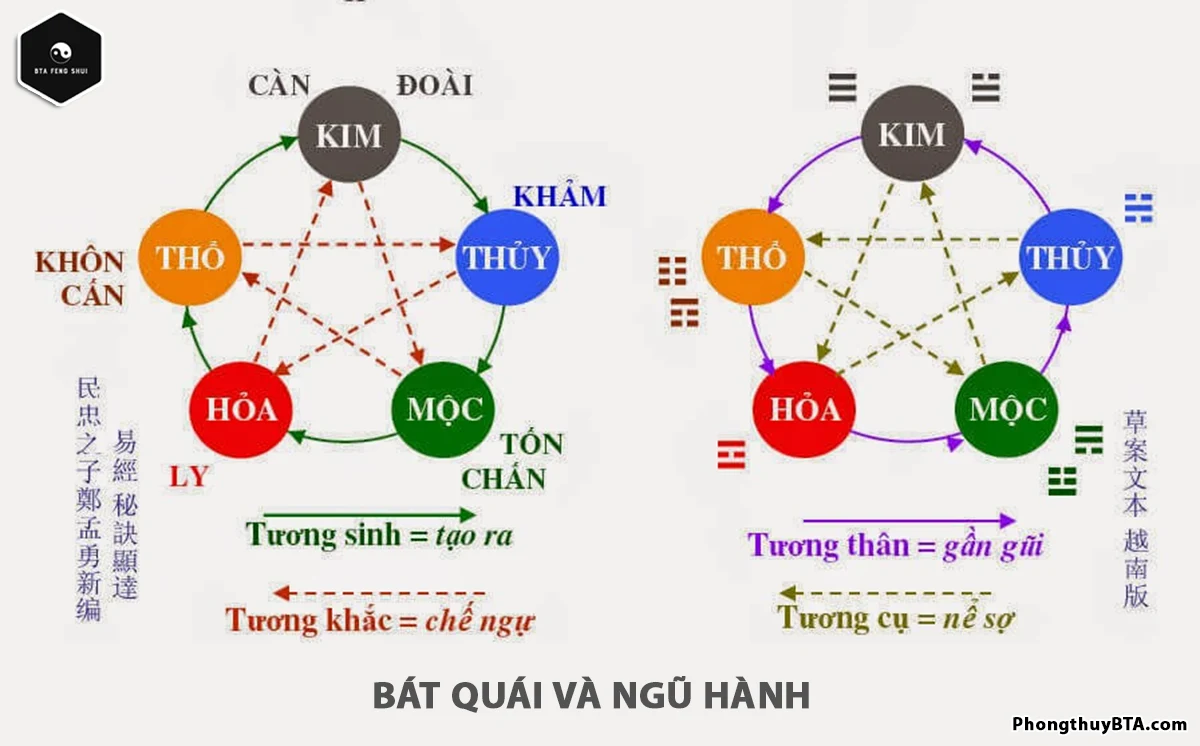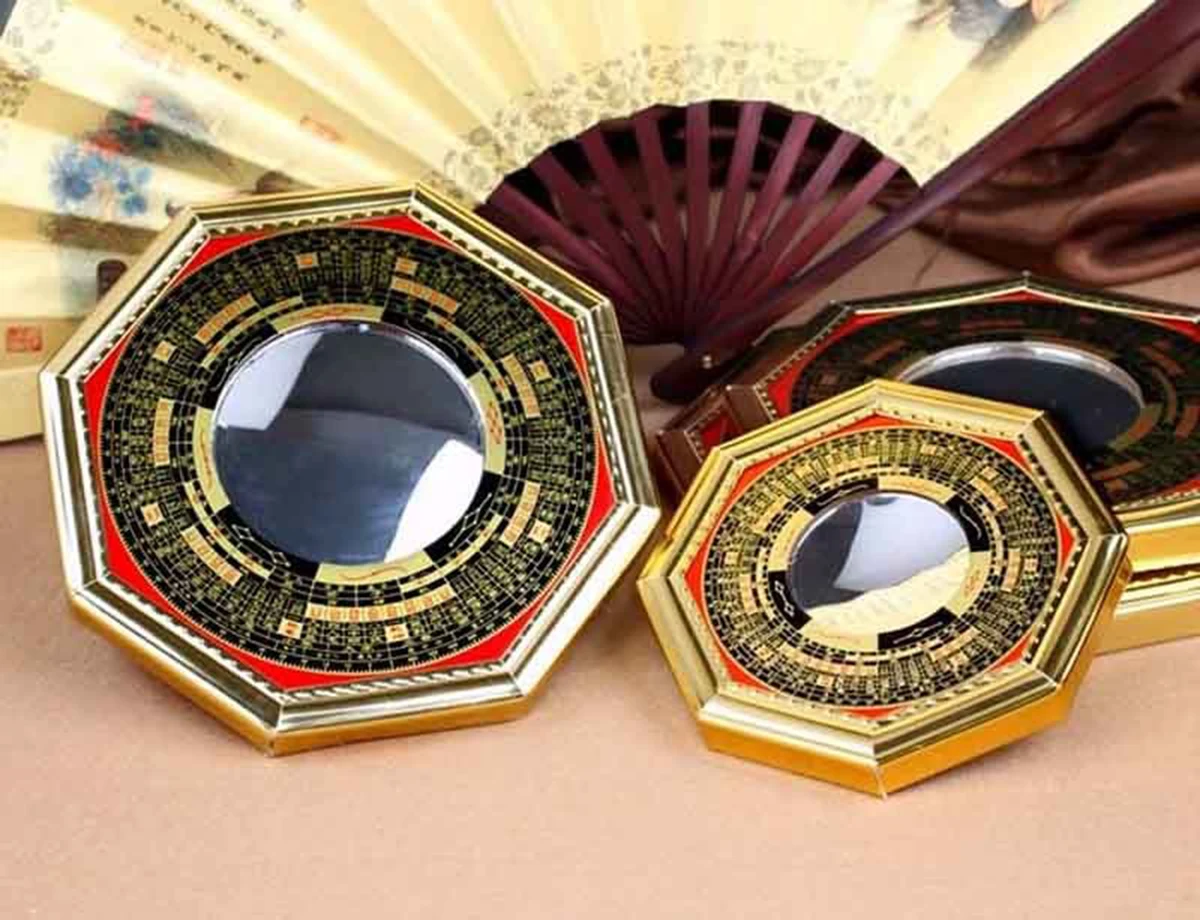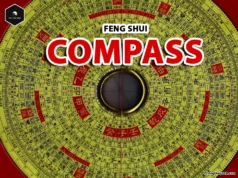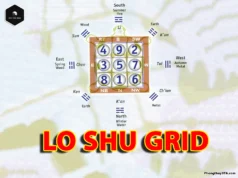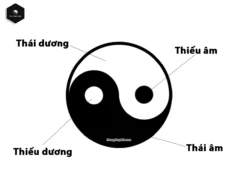The Bagua is a central symbol in feng shui and Chinese philosophy, deeply tied to yin-yang and cosmic balance.
This article explores the origins, profound meanings, and practical applications of the Bagua and Five Elements in daily life, helping you attract luck, prosperity, and optimize your living space.
Note: This article was directly translated from the original Vietnamese version by BTA Feng Shui using Grok 3.
What Is the Bagua?
The Bagua (Eight Trigrams) is a system of eight fundamental trigrams, each composed of three lines: yin lines (broken lines –) and yang lines (solid lines —). It forms the foundation of the I Ching, representing the essential elements of the universe, from nature to humanity.
The Bagua originates from the philosophy of Taiji (Supreme Ultimate), duality, four symbols, and ultimately the eight trigrams, reflecting the constant motion and transformation of all things.
=>> See also: Master the Feng Shui Bagua Map for Harmony in Your Home
Origins of the Bagua
According to legend, Fuxi, a mythical figure, created the Bagua based on the philosophy of yin-yang. By observing the workings of heaven, earth, and all beings, he developed this symbolic system. The formation of the Bagua follows this sequence:
- Non-existence creates existence, and existence is Taiji.
- Taiji generates duality (yin and yang).
- Duality produces four symbols (lesser yin, greater yin, lesser yang, greater yang).
- Four symbols form the eight trigrams, which further develop into the 64 hexagrams of the I Ching.
Another origin is attributed to King Wen of Zhou, who developed the Later Heaven Bagua, emphasizing the relationship between heaven (Qian) and earth (Kun) to create all things.
Meaning of the Bagua
The Bagua is not just a symbol but a tool for decoding natural and social laws. Each trigram has a unique meaning, linked to the Five Elements (Metal, Wood, Water, Fire, Earth), directions, seasons, and family relationships. Here are the eight trigrams:
- Qian (乾): Symbol of heaven, northwest direction, Metal element. Represents creativity, strength, and the father’s role in the family.
- Kun (坤): Symbol of earth, southwest direction, Earth element. Embodies receptivity, devotion, and the mother’s role.
- Zhen (震): Symbol of thunder, east direction, Wood element. Signifies beginnings, stimulation, and the eldest son.
- Xun (巽): Symbol of wind, southeast direction, Wood element. Represents flexibility, gentleness, and the eldest daughter.
- Kan (坎): Symbol of water, north direction, Water element. Reflects danger, movement, and the middle son.
- Li (離): Symbol of fire, south direction, Fire element. Symbolizes brilliance, dependence, and the middle daughter.
- Gen (艮): Symbol of mountain, northeast direction, Earth element. Represents stillness, completion, and the youngest son.
- Dui (兌): Symbol of lake, west direction, Metal element. Embodies joy, satisfaction, and the youngest daughter.
Prior Heaven and Later Heaven Bagua
The Bagua is expressed through two main arrangements: Prior Heaven Bagua and Later Heaven Bagua, each with distinct meanings and applications.
Prior Heaven Bagua
- Characteristics: Created by Fuxi, it focuses on the primordial nature of the universe. Trigrams are arranged symmetrically, reflecting yin-yang balance.
- Meaning: Represents the ideal, static state of the universe before movement begins.
- Applications: Often used in philosophy, astrology, and theoretical studies of the cosmos.
Later Heaven Bagua
- Characteristics: Developed by King Wen, it reflects the movement and changes of the real world. Trigrams are arranged based on time cycles and seasons.
- Meaning: Focuses on human-environment interactions, emphasizing practicality.
- Applications: Widely used in feng shui to determine house orientations, arrange spaces, and neutralize negative energy.
Bagua and the Five Elements
The Bagua is closely tied to the Five Elements, forming a system of generating and controlling relationships, balancing energy in feng shui:
- Metal: Qian, Dui.
- Wood: Zhen, Xun.
- Water: Kan.
- Fire: Li.
- Earth: Kun, Gen.
For example, Kan (Water) generates Zhen and Xun (Wood) but controls Li (Fire). Understanding these relationships helps feng shui practitioners choose suitable house orientations, colors, and items based on the homeowner’s element.
Applications of the Bagua in Feng Shui
The Bagua is a vital feng shui tool for adjusting energy in living and working spaces. Here are common applications:
1. Bagua Mirror
The Bagua mirror is a popular feng shui item hung above the front door to protect and neutralize negative energy. There are three main types:
- Convex Bagua Mirror: Reflects negative energy, ideal for homes facing dead-end streets, utility poles, or large trees.
- Concave Bagua Mirror: Attracts positive energy from lakes, rivers, or streams, bringing vibrant energy.
- Flat Bagua Mirror: Balances energy, suitable for most spaces.
Usage Notes:
- Hang the mirror high, facing outward, avoiding reflection into neighboring homes to prevent energy conflicts.
- Avoid placing mirrors facing temples or shrines, as this may disrupt their spiritual energy.
2. Arranging Living Spaces
The Bagua map is used to determine favorable and unfavorable directions in a home. For example:
- East (Zhen): Ideal for study rooms or creative spaces.
- North (Kan): Suitable for bedrooms, promoting relaxation and energy restoration.
- Southwest (Kun): Great for living rooms, enhancing family bonding.
3. Applications in Medicine and Wellness
The Bagua also relates to body parts, aiding acupuncture and wellness practices:
- Qian: Associated with the head.
- Kun: Linked to the abdomen and stomach.
- Li: Connected to the heart and eyes.
Traditional healers use the Bagua to balance bodily energy and prevent illness.
Unique Significance of the Bagua in Feng Shui
The Bagua is not only a feng shui tool but also carries profound philosophical meaning. It teaches balance between yin and yang, and harmony between humans and nature. In feng shui, the Bagua helps:
- Neutralize Negative Energy: Bagua mirrors protect homes from harmful energy.
- Attract Positive Energy: Arranging spaces according to the Bagua brings luck and prosperity.
- Balance Energy: Helps homeowners live in harmony with their surroundings.
A unique example is Zhuge Bagua Village in China, where the village layout follows the Bagua pattern, with Zhongchi Lake at the center and eight alleys representing the eight trigrams. This showcases the practical and creative application of the Bagua in real life.
=> Explore more: What Is Feng Shui? Is It Science or Superstition?
Tips for Using the Bagua
To maximize the Bagua’s effectiveness, consider these tips:
- Choose the Right Bagua Mirror based on your purpose and home orientation.
- Consult a Feng Shui Expert to determine the best placement for mirrors or space arrangements.
- Avoid Overusing Bagua Mirrors, as improper use may disrupt energy balance.
- Align with the Homeowner’s Element and Age to optimize results.
The Bagua is a powerful feng shui symbol, harmonizing yin-yang and enhancing living spaces. Understanding each trigram’s meaning and applying Bagua mirrors effectively allows you to leverage ancient wisdom for a better quality of life.
Combine Bagua knowledge with expert feng shui advice for optimal results. If you found this helpful, please rate 5 stars and share this article!



